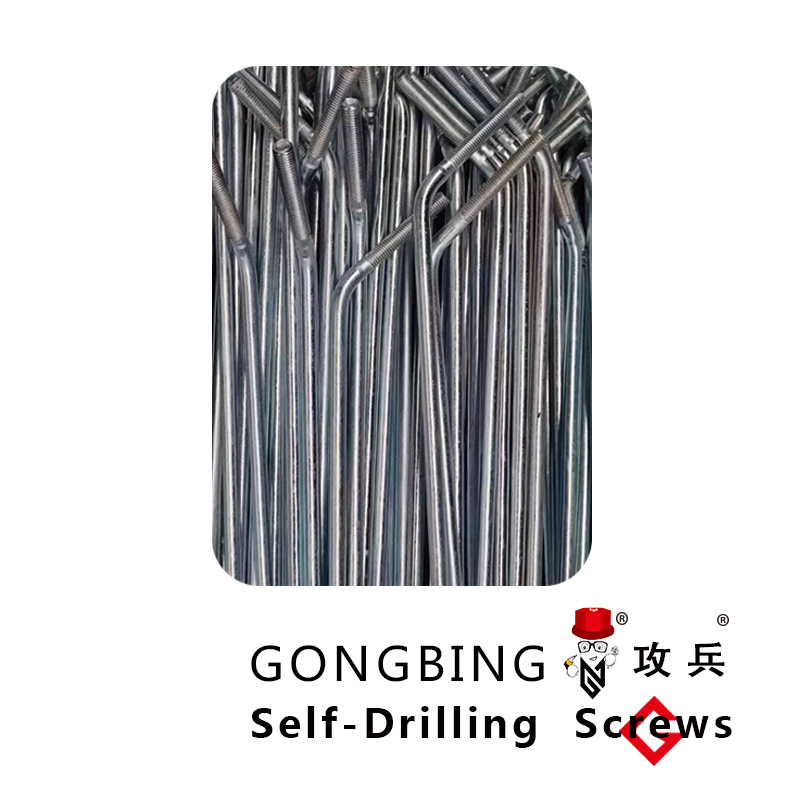Self-Tapping Screws for Enhanced Structural Steel Applications and Durability
Self-Drilling Screws for Structural Steel A Comprehensive Overview
In the realm of construction and structural engineering, the choice of fasteners is crucial to the integrity and durability of any project. Among the various types of fasteners available, self-drilling screws have gained significant popularity, particularly for applications involving structural steel. This article explores the benefits, applications, and important considerations regarding self-drilling screws in structural steel assembly.
What Are Self-Drilling Screws?
Self-drilling screws, often referred to as Tek screws, are specialized fasteners that come with a drill bit-like point. This unique design allows them to penetrate materials without the need for pre-drilling holes, making them exceptionally efficient and user-friendly. These screws are especially beneficial when working with thick steel sections, as they can effectively cut through metal and create their own holes.
Advantages of Self-Drilling Screws
1. Efficiency The primary advantage of self-drilling screws is their ability to eliminate the need for separate drilling operations. This not only speeds up the installation process but also reduces labor costs and the need for additional tools.
2. Versatility Self-drilling screws are available in various sizes and styles, making them adaptable to different types of steel and project requirements. They can be used in a wide range of applications, including metal roofing, siding, structural beams, and more.
3. Strong Joint Integrity These screws provide a robust fastening solution, offering exceptional shear and tensile strength. When installed correctly, they create a secure connection that enhances the overall stability of structures.
4. Cost-Effective By combining drilling and fastening into a single step, self-drilling screws can significantly lower production costs. Their efficiency translates into shorter project times, which can be a critical factor for budget-conscious projects.
5. Corrosion Resistance Many self-drilling screws are coated or made from materials that resist corrosion, ensuring a long-lasting and robust connection. This feature is especially important in projects where exposure to the elements is a concern.
Applications in Structural Steel
Self-drilling screws are widely used in a variety of structural steel applications
. Some common uses include- Metal Framing In steel construction, self-drilling screws are essential for connecting steel studs and track systems. Their ability to cut through metal makes them ideal for securing parts of the frame.
self drilling screws for structural steel

- Roofing Systems These screws are extensively used in roofing applications for fastening metal roof panels to purlins or structural steel frames. Their waterproof seals help prevent leaks, contributing to the longevity of roofing systems.
- Siding and Cladding Self-drilling screws are effective for attaching metal siding and cladding to structural steel. Their quick installation means that external finishing can occur more rapidly.
- Bridges and Other Structures Engineers often employ self-drilling screws in various steel structures, including bridges and towers, where strong, reliable fasteners are crucial.
Key Considerations
When choosing self-drilling screws for structural steel, several important factors must be considered
1. Material Compatibility Ensure that the screws are suitable for the specific type of steel being used. Stainless steel screws offer excellent corrosion resistance but may be more expensive than their carbon steel counterparts.
2. Screw Size and Length Selecting the appropriate size and length is critical for ensuring a secure connection. The diameter and length of the screws should be matched to the thickness of the steel being fastened.
3. Drill Point Design Different projects may require different types of drill points. Choosing the right design can enhance the speed and efficiency of installation and improve the quality of the hole being created.
4. Environmental Factors Consider the environmental conditions the screws will face. Outdoor applications might necessitate screws with advanced coatings to withstand elements like humidity and salt exposure.
5. Installation Techniques Proper installation techniques, including torque settings and spacing, are essential to maximize the performance of self-drilling screws and preserve structural integrity.
Conclusion
Self-drilling screws play an integral role in the framework of modern construction, specifically when working with structural steel. Their efficiency, versatility, and durability make them a go-to choice for builders and engineers alike. By understanding the key advantages and careful selection criteria, professionals can effectively harness the benefits of self-drilling screws, leading to safer and more efficient construction practices.
-
Weatherproof Plastic Expansion Anchors for OutdoorNewsJun.06,2025
-
Sustainability in the Supply Chain: Eco-Friendly TEK Screws ProductionNewsJun.06,2025
-
Load-Bearing Capacity of External Insulation FixingsNewsJun.06,2025
-
Double Head Bolts: Enhancing Efficiency in Industrial MachineryNewsJun.06,2025
-
Corrosion Resistance in Chipboard Screws: Coatings for Wholesale DurabilityNewsJun.06,2025
-
Butterfly Toggle Bolts : Enhancing Structural ResilienceNewsJun.06,2025
